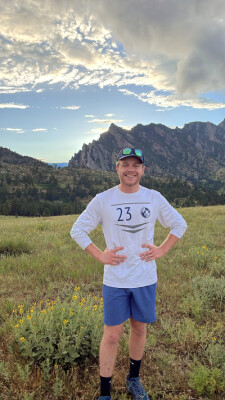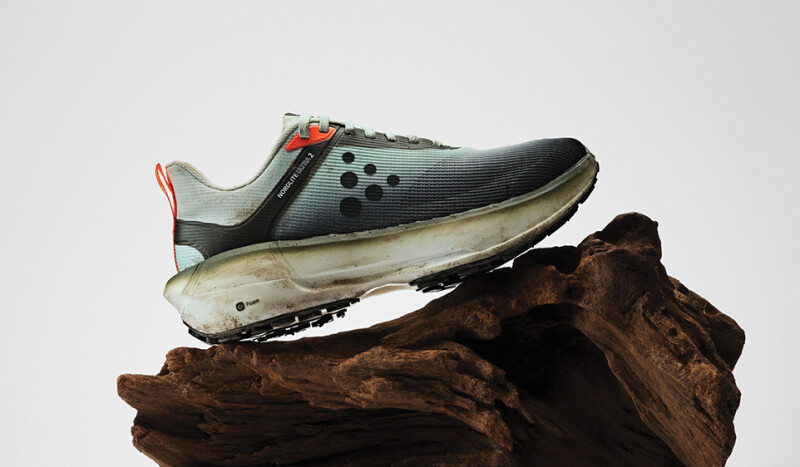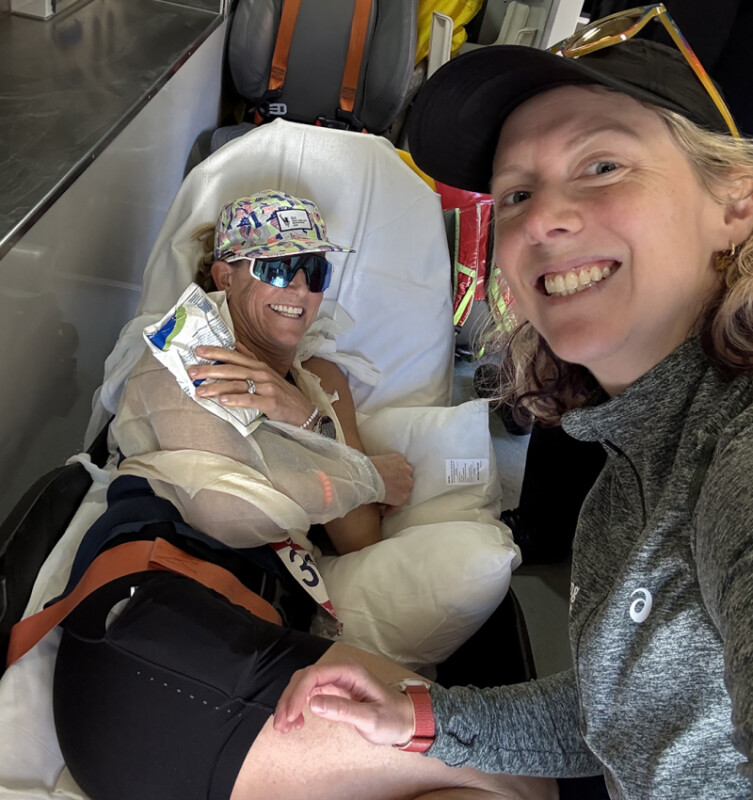Leave No Trace is a 501(c)(3) non-profit organization providing programs, education, training and outreach in all 50 states and more than 100 countries. Utilizing the power of science, Leave No Trace (LNT) helps to educate users on responsible recreation practices, from hiking in the backcountry to a picnic in the backyard to running on a trail. In this special Trail Issue of Running Insight we take a virtual trail run with corporate development manager Peter Murry to explore the group’s mission, the importance to the trail running segment and how retailers and brands can benefit from partnering with Leave No Trace.
How does the Leave No Trace mission translate to the trail running community?
Simple, Leave No Trace can find applications in any outdoor activity. As our roots are in trail recreation, lots of our education can be directly applied to train running.
Have you made any special inroads or efforts in the trail running space?
Trail running and general trail use have long been a focus of our education and outreach. We work with a wide range of partners, from brands to event managers, from land agencies to the end user. While every partnership is unique, each helps to achieve the mission of educating users on how to get out and enjoy the trail while minimizing unintended consequences.
Any success stories?
The partnerships in the trail running space with which we have had the most success are those who see Leave No Trace education as a pillar of their brand identity. Partners committed to spreading Leave No Trace education are a huge factor in our ability to educate the millions of users that we do annually.
Are trail runners (you being one of them) more conscious of eco-efforts by events and brands than their road racing counterparts?
I wouldn’t say that the trail running community is more conscious or invested in eco-efforts than their road running counterparts, but it is differently conscious. Everyone and every community has a unique understanding and relationship with conservation. The trail running community has the unique position of often being based in areas that are more easily impacted by improper usage. Because of this, trail usage and wilderness recreation guidelines are often at the forefront of thought for event managers and brands. We recommend that no matter where your trail takes you – from the city center to the mountain peak – to work to leave it better than you found it by following Leave No Trace principles.
How do you feel the conservation efforts made by trail running event directors have been?
It is difficult to generalize trail running event directors and their conservation efforts, but I can speak to areas in which we have seen noteworthy success in the past.
Please do.
The first and most crucial step in minimizing your impact before, during and after your trail day is to comprehensively understand the area you are recreating and the noteworthy conservation focuses. This may seem like an obvious recommendation, but it is so critically important as the areas of focus/concern will vary significantly from a summer race in Moab, Utah, to a winter race in Hayward, Wisconsin. Integrating this conversation at every step is essential, from what snacks you provide to your social media content leading up to race day.
What is your advice to them about being more eco-conscious in their events and how they can achieve that?
Continuing on the answer from above, this topic needs to start with a comprehensive understanding of the area and the points of focus for user-recreation conservation.
So where do they start?
A great way to start this conversation is by connecting with the area’s land managers and invested local organizations. The local user is always one of the first and best resources for understanding an area, thus providing relevant user-based education.
What’s next?
Once you have this knowledge, the next step is effectively communicating it to the end user. Smaller and more frequent touchpoints are the most effective for educating.
What are some examples of that?
For example, rather than having one sign in Moab with three paragraphs about cryptobiotic soil and the importance of staying on the trail, find creative ways to disseminate this education over the months leading up to trail day. Digital education on your website, social media and email confirmations/notifications are all great ways to help spread out this content with higher frequency.
What is the ultimate goal?
The ultimate goal is to educate the user before they even get to the trail.
How can run specialty retailers get involved in this effort?
Specialty retailers can have a huge impact in helping to champion sustainable recreation practices. Retailers have the unique opportunity of interacting directly with the end user, whether at brick-and-mortar stores or digitally. Implementing Leave No Trace education into these touch points through in-store signage, social media content and website highlights can have a massive impact, as a person trained in Leave No Trace is five times more likely to protect nature.
What would be the benefit to our retailer readers?
As an organization that encourages people to get outside and into sensitive ecosystems, it is our responsibility to do so sustainably. Ultimately, these are areas we all enjoy and benefit from and losing access to them would hurt our collective well-being, not to mention your business, which is contingent on people enjoying outside spaces.
How about from a marketing standpoint?
Consumers are more focused now than ever before on who they are buying from and where their money is going. It is no longer enough just to produce or sell quality products. Brands and retailers must show their consumers they are investing significant time and money into protecting our outdoor areas. Brands that champion sustainability stand out from the congested crowd of quality gear.
And the same questions for brands – How and why should they partner with Leave No Trace?
Every brand partnership we have is unique, from event collaboration to social media content to full-scale brand integration. Partnering with Leave No Trace helps to provide a recognizable and well-supported name to your sustainability story.
And what does Leave No Trace bring to the table?
Leave No Trace has the unique opportunity to offer turn-key yet impactful partnerships. Our goal as an organization is to educate users as far and as wide as possible. By partnering on something as simple as sharing our education on your social media or website, you stand out as a brand and create a meaningful and lasting impact on the outdoors. There are many fantastic organizations out there that are effecting positive change in the trail running space — and most likely in your backyard. It just requires intentionality on your end to identify and develop these relationships.
Finally, why all of this is so important to the trail running community specifically and the run specialty business in general?
Using your running or retail brand to promote conservation and sustainability is important within the running communities, as running is often the introduction for many to outdoor recreation. Users are substantially more receptive to adapting Leave No Trace practices as part of their outdoor experience if it is included in their experience from day one.
And one more time, what’s in it for retailers and brands?
If you do your part to promote sustainability on the trail for the first-timer, you have greatly increased the chance of creating a life-long steward.
____________
The Leave No Trace message to trail runners
Here are a few quick tips from Leave No Trace’s Peter Murry that retailers can share with their customers before their next time on the trail.
• Know Before You Go. If you’re heading to a nearby park or trailhead, research the area before you head out to learn about the rules and regulations in the area. If you know that a trail tends to be busy, consider choosing a less popular trailhead or running in off-times to prevent overcrowding that can lead to trail widening and erosion.
• Stick to Trails, Even When It’s Muddy. Run on durable surfaces such as trails, rocks and roads. Run through mud puddles or patches to prevent trail widening and avoid cutting switchbacks to prevent erosion that can lead to sedimentation and turbidity in local waterways. If a trail is especially muddy, choose another route to give it time to recuperate.
• Pack It In, Pack It Out. Be prepared to pack out any wrappers and trash from energy snacks or gels and use a reusable water bottle to minimize the impact of single-use items.
• Be Respectful of Flora and Fauna. Running is an excellent time to check in with yourself and the natural world. See a beautiful flower or a cool-looking rock? Take a picture and leave it for others to enjoy as well. See an incredible animal? Make sure you’re viewing them from a safe distance to Respect Wildlife.
• Be Kind and Communicate. Use the yield triangle to help you determine who has the right away on the trail. Everyone must feel safe while running, regardless of ability, race, class or gender.






